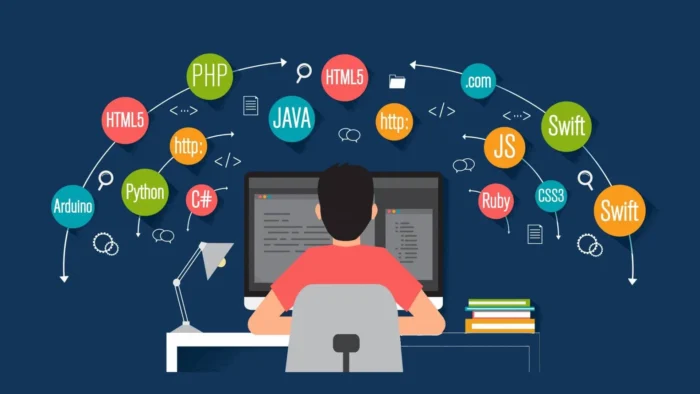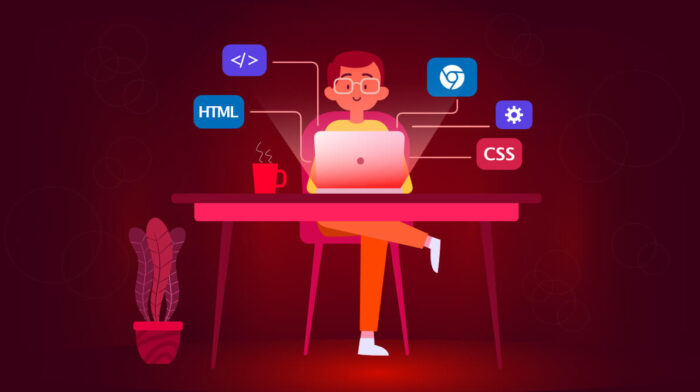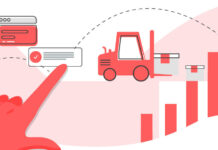
Ideas are the first step of every great innovation. But it is the first of the first steps. To develop a web app, you need the right strategies, design, research, expert team and the right technology. Here I will tell you about all the trending and reliable tech stacks so that you can choose the one that is right for your web app.
Before that, I hope you know what a tech stack is. In case not, here’s a brief.
What is Tech Stack?

A tech stack is an amalgamation of tech frameworks and languages. With this stack developers create the software ecosystem, whether app, web or website. It is also called a solution stack sometimes. If you are wondering why it is called ‘stack,’ the answer is obvious. One technology is layered upon another, creating a stack.
A technology stack has two parts – the front end and the backend.
Front-end: Front-end is the part that determines how the software is going to look – the interface of the app/website. Usually, the web app front end is pretty straightforward. For example – WhatsApp web. Easy to understand and use.
Back-end: This is where the complexity comes in. This part defines the functionality of the software. Whether you want to add a chatbot, keep a database, or other features. There are several tools to give structure to front-end and back-end web app development.
Front-end Web App Development Tools

The UX/UI of your web application defines your brand. Since it is a client-side tech stack, you have to make sure of the web application development services you choose. The interface defines the look of your web app. Here are a few popular and often-picked front-end web app development tools you should check out.
HTML – Hypertext Markup Language
HTML is a programming language that’s used to give structure to your web app. HTML is the foundation of front-end web development, from adding new elements to the web page to defining the layout and formatting. It provides the basic structure and semantics for content presentation on the web.
CSS – Cascading Style Sheets
CSS is responsible for the visual appearance and styling of your web app. It allows you to define the colors, fonts, layouts, and overall design aspects of your application. CSS works hand-in-hand with HTML to create a visually appealing and user-friendly interface.
JavaScript
JavaScript is a dynamic programming language that adds interactivity and functionality to your web app. It enables you to create interactive elements, handle user events, manipulate data, and perform various client-side operations. JavaScript is widely used for building modern and responsive web applications.
React
React is a popular JavaScript library for building user interfaces. It provides a component-based approach to web development, allowing you to create reusable UI components. React is known for its efficiency, performance, and ease of use, making it a preferred choice for many developers.
Angular
Angular is a comprehensive JavaScript framework developed by Google. It offers a complete solution for building large-scale, feature-rich web applications. Angular provides powerful tools and features for data binding, dependency injection, routing, and more. It follows the MVC (Model View Controller) architectural pattern.
Vue.js
Vue.js is a progressive JavaScript framework that is gaining popularity among developers. It focuses on simplicity and flexibility, making it easy to integrate with existing projects or build from scratch. Vue.js offers a reactive and component-based approach to building user interfaces.
Backend Web App Development Tools

While the front-end is responsible for the user interface, the backend handles the logic, data storage, and communication with the server. Choosing the right backend technologies is crucial for the performance, scalability, and security of your web app. Here are some popular backend web app development tools.
Node.js
Node.js is a runtime environment that allows you to run JavaScript on the server-side. It provides a lightweight and efficient platform for building scalable and high-performance web applications. Node.js has a large ecosystem of libraries and frameworks, making it a versatile choice for backend development.
Django
Django is a high-level Python web framework that promotes rapid development and clean, pragmatic design. It follows the DRY (Don’t Repeat Yourself) principle and provides built-in features for authentication, database management, URL routing, and more. Django is known for its scalability and security.
Ruby on Rails
Ruby on Rails, often referred to as Rails, is a popular web application framework written in Ruby. It emphasizes convention over configuration, allowing developers to focus on writing code rather than dealing with boilerplate setup. Rails provides powerful abstractions and automates many common tasks, enabling rapid development.
ASP.NET
ASP.NET is a web development framework by Microsoft that supports multiple programming languages, including C# and Visual Basic. It offers a robust set of tools and libraries for building scalable and secure web applications. ASP.NET follows the MVC architectural pattern and integrates well with other Microsoft technologies.
Express.js
Express.js is a minimal and flexible web application framework for Node.js. It provides a simple yet powerful set of features for building web APIs and server-side applications.
Express.js allows you to create RESTful services, handle HTTP requests, implement middleware, and more. It is lightweight and highly customizable.
Conditions to Choose the Right Tech Stack

Every web app has its own set of requirements. For example, a web app related to finance will require more security than an e-news web app. While deciding on the right tech stack, keep the following things in mind.
The scale of the Project
The size of your project will define the type of tech you require. Accordingly, you can connect with an expert application development company and start working on your web app.
Features and Complexity
If you want your web app to be complex you would require tools that can back it up. By carefully evaluating the features and complexity of your web app, you can select a tech stack that aligns with your project’s requirements and enables you to build a robust and scalable solution.
Remember to prioritize flexibility, extensibility, and future growth potential to ensure that your web app can evolve and adapt as your needs change over time.
Integration and Compatibility
Consider the compatibility of the technology stack with other systems and platforms you may need to integrate with. Ensure that the chosen technologies can seamlessly work together and communicate effectively.
Scalability and Performance
Evaluate the scalability and performance requirements of your web app. Will it be needed to handle a large user base or high volumes of data? Choose technologies that can scale horizontally or vertically and provide optimal performance for your specific needs.
Security
Security is a critical aspect of any web app. Assess the security features and capabilities of the technologies in your stack. Look for frameworks or tools that offer robust security measures, such as encryption, authentication, and protection against common vulnerabilities.
Development Team Expertise
Consider the skills and expertise of your development team. Choose technologies that align with their proficiency and experience. If your team is already familiar with a particular stack, it can significantly reduce the learning curve and development time.
Community and Support
Check the community and support around the technologies you are considering. A strong community ensures that you have access to resources, documentation, and community-driven solutions. It also indicates the technology’s popularity and longevity.
Cost and Time
Evaluate the cost implications and time constraints associated with the technology stack. Some technologies may require additional licenses or have higher development costs. Consider the development timeline and choose technologies that allow for efficient development and deployment.
Future Growth and Flexibility
Anticipate the future growth and evolution of your web app. Will you need to add new features, scale the application, or adapt to changing market trends? Select technologies that offer flexibility, modular architecture, and a vibrant ecosystem for future enhancements.

It’s a Wrap
By carefully considering every factor and aligning them with the requirements of your web app, you can make an informed decision when choosing the right technology stack. Remember that the perfect stack may vary for each project, and it’s essential to prioritize the needs and goals of your specific web application.












